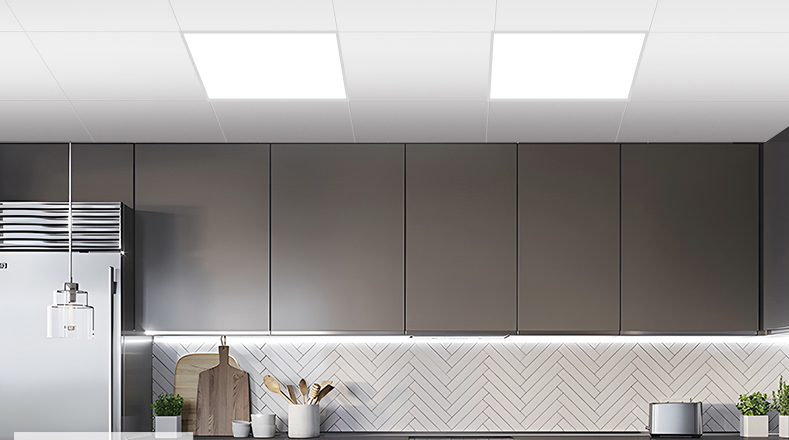Effective lighting planning is a crucial aspect of kitchen design, enhancing both the aesthetics and functionality of the space. Here are some practical tips for selecting and arranging kitchen lighting:

1. Lighting Needs Assessment
General Lighting**: Kitchens require sufficient overall lighting to illuminate the entire space. Typically, neutral white light (around 4000K) provides clear visibility without being too harsh.
Task Lighting: Additional lighting is needed for work areas such as cutting boards, stove tops, sinks, and storage cabinets.
Accent Lighting: Consider installing decorative lights above the dining table or in display areas.
2. Types of Lighting Fixtures
Ceiling Lights or Panel Lights: Suitable for general lighting, mounted on the ceiling to provide even light distribution.
Recessed Downlights: Ideal for general or focused lighting.
Under-Cabinet Lights: Used for task lighting, installed under cabinets to directly illuminate work surfaces.
Pendant Lights: Can serve as decorative fixtures, ideal for hanging above dining tables or kitchen islands.
Moisture-Resistant and Oil-Resistant Fixtures**: Important for the kitchen environment.
Motion Sensor Lights: Useful in cabinets to easily find utensils and ingredients.
Dimmable Lights: Install dimmable fixtures to adjust brightness based on needs, saving energy and creating a comfortable atmosphere.
Style Matching: Choose lights that match the kitchen’s overall style, such as modern, Nordic, or industrial.


3. Wiring and Electrical Considerations
Pre-Installed Wiring: Plan the lighting wiring route early in the renovation process using PVC conduit.
Socket and Switch Placement**: Strategically place switches and sockets for easy control of different lighting zones, ensuring convenience and safety.
Grouped Controls: Consider controlling different areas of lighting separately, which can be managed via wall switches or smart control systems.

4. Important Considerations
Safety Distance: Ensure that lighting fixtures, especially heat-producing ones, are kept at a safe distance from flammable materials.
Waterproofing: Ensure adequate waterproofing measures, particularly around sinks and stoves.
Ease of Cleaning: Choose fixtures that are easy to clean to handle kitchen grease and steam.
Ceiling Type: Select fixtures based on the ceiling material, whether it's a drop ceiling, plasterboard, or other types.

5. Compliance and Professionalism
Regulations: Ensure all electrical installations comply with local building and electrical safety codes.
Professional Installation: Given the complexity and safety considerations, it’s advisable to hire a professional electrician for installation.
6. Smart Integration
Smart Home Integration: If desired, plan to integrate the kitchen lighting system with smart home systems for remote control and automated scene settings.













